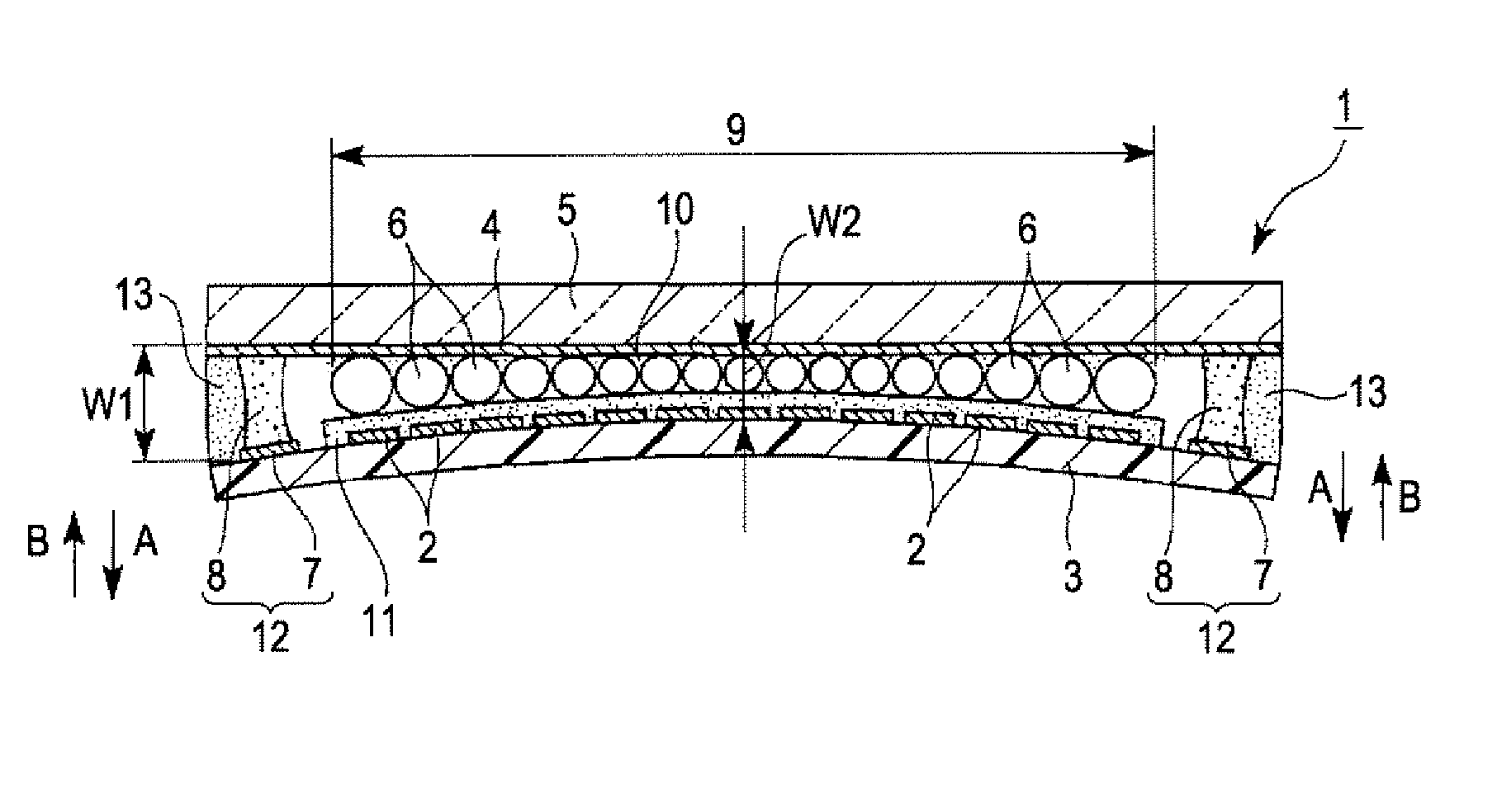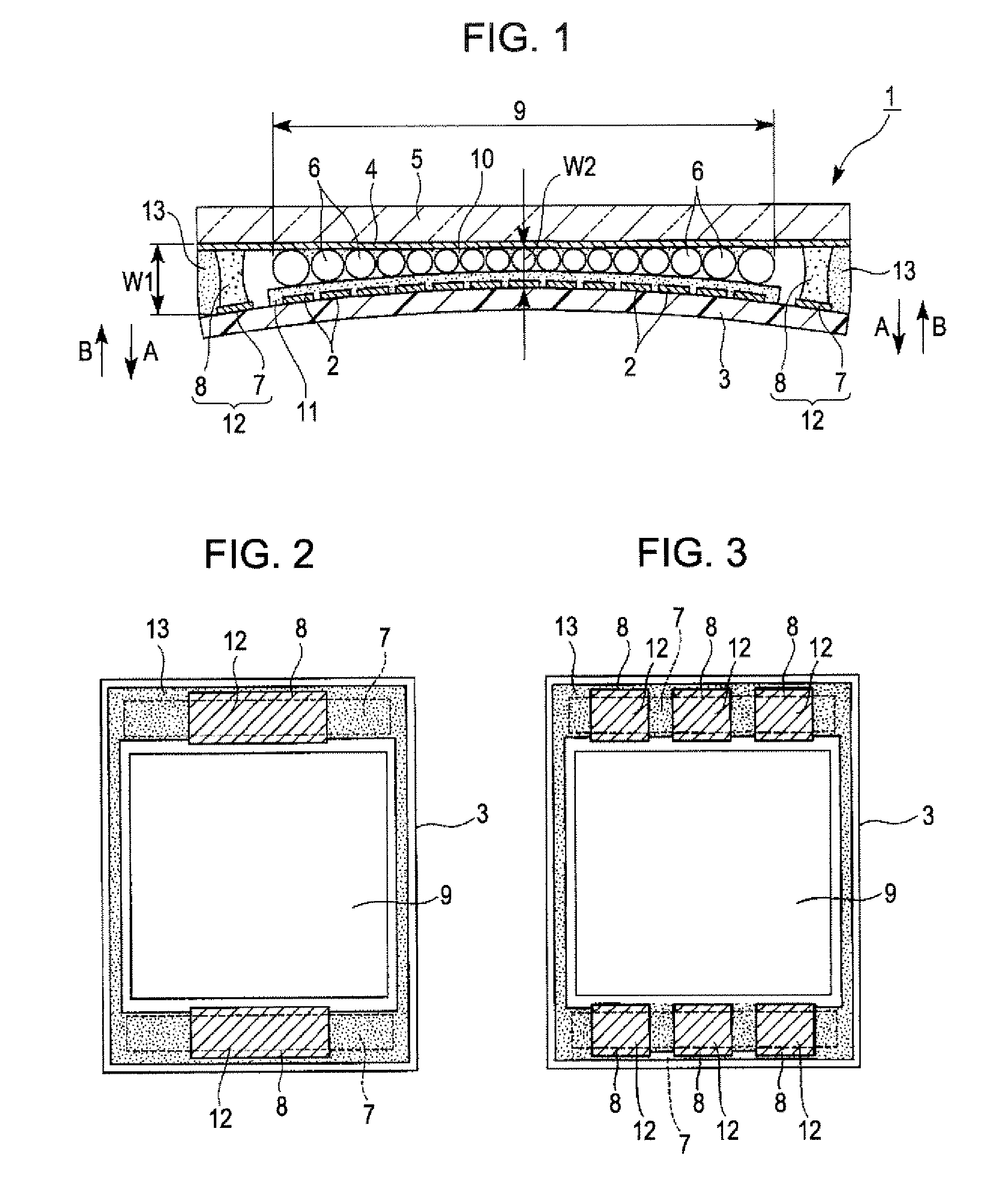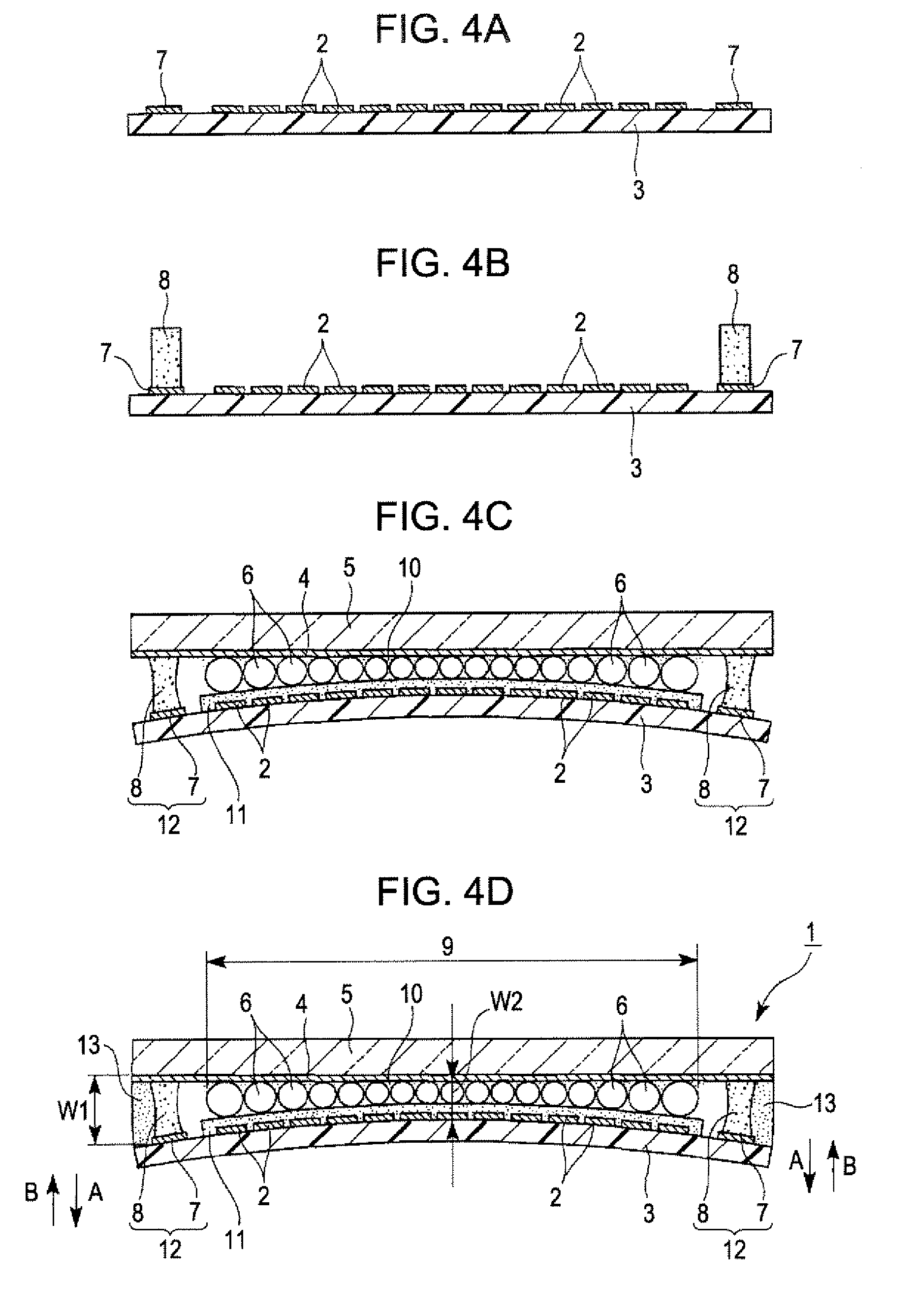Display device and electronic apparatus
a technology of electronic equipment and display device, which is applied in the direction of non-linear optics, instruments, optics, etc., can solve the problems of reducing the pressing force due to the resilience toward the conductive material, the failure of the product to meet the requirements of the application, and the failure to ensure the long-term reliability of the product, so as to prevent the occurrence of defective continuity resulting from the separation between the substrate and the conductive material. , the effect of long-term reliability
- Summary
- Abstract
- Description
- Claims
- Application Information
AI Technical Summary
Benefits of technology
Problems solved by technology
Method used
Image
Examples
Embodiment Construction
[0031] The invention will be described in detail below. FIG. 1 is a schematic diagram showing a display device according to an embodiment of the invention. In FIG. 1, reference numeral 1 represents a display device. Note that, in FIGS. 1 and 4A to 4D, in order to facilitate understanding of the characteristic parts of the invention, the device is schematically shown with the size and shape being extremely changed from the actual size and shape. In particular, although microcapsules in the center and microcapsules at both ends are shown to have different diameters, all the microcapsules are actually formed so as to have substantially the same diameter.
[0032] The display device 1 includes a first substrate 3 provided with a plurality of pixel electrodes 2 and a second substrate 5 provided with a common electrode (counter electrode) 4. Microcapsules 6 encapsulating a display material are sandwiched between the first substrate 3 and the second substrate 5. Such a display device 1 can b...
PUM
| Property | Measurement | Unit |
|---|---|---|
| thickness | aaaaa | aaaaa |
| distance | aaaaa | aaaaa |
| thickness | aaaaa | aaaaa |
Abstract
Description
Claims
Application Information
 Login to View More
Login to View More - R&D
- Intellectual Property
- Life Sciences
- Materials
- Tech Scout
- Unparalleled Data Quality
- Higher Quality Content
- 60% Fewer Hallucinations
Browse by: Latest US Patents, China's latest patents, Technical Efficacy Thesaurus, Application Domain, Technology Topic, Popular Technical Reports.
© 2025 PatSnap. All rights reserved.Legal|Privacy policy|Modern Slavery Act Transparency Statement|Sitemap|About US| Contact US: help@patsnap.com



